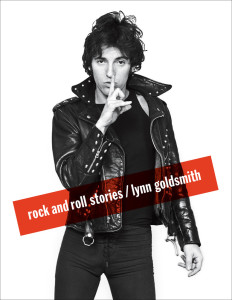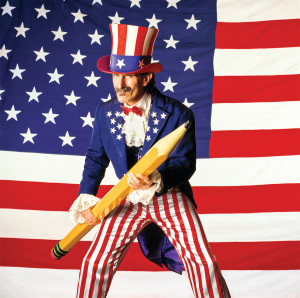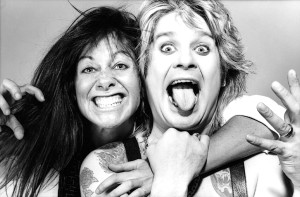THE PROLIFERATION OF MOBILE PHONES has wreaked havoc in evolved culture, cutting deeply into the technology market, the music industry and movie theaters across the globe. No longer gadgets for simply making and receiving calls, these incomprehensibly potent devices gather and disseminate titanic chunks of media into the stratosphere in the touch of a screen. Also, thanks to cell phones, everybody’s a photographer now. To be fair, the quality of mobile phone cameras and the many post-processing applications available can render captivating and artfully-composed images, but for the most part, it’s all cat photos, selfies and over-edited horse manure.
All of which underscores just how hard it is to practice the sacred art of photography as a means of extracting a fully-realized story from a flickering moment that can emerge and then disappear within the blink of an eye. Beyond picking the right equipment and developing a deep familiarity with lighting, all great photographers possess a transcendental awareness of their surroundings, innately sensing that sublime instant for opening the shutter and pulling the brightest hues of their subject’s spirit into the frame of their shot.
Among the planet’s preeminent photographers, none but a scant few have achieved the success or resonance of Lynn Goldsmith, one of rock and roll’s enduring observers. Lynn has chronicled the storied career of Bruce Springsteen, documented legendary stadium tours for the Rolling Stones and quietly captured icons like Michael Jackson and Bob Marley in their most fragile moments. She even called Miles Davis a bastard.
With over one hundred LP covers to her name, Lynn is a richly-decorated virtuoso of her craft, whose work has appeared in the covers and pages of of Life, Newsweek, Time, Rolling Stone, Sports Illustrated, People, Elle, Interview and The New Yorker. Lynn’s vibrant images also appear in worldwide exhibits and collections, including The Smithsonian, the Polaroid Collection, the Kodak Collection, the Museum of Modern Art, the Chicago Museum of Contemporary Photography and the permanent collection of Museum Folkwang.
In short, Lynn Goldsmith is a total badass.
Recently she released Rock and Roll Stories, an eye-popping coffee table volume featuring iconic portraiture of the tallest legends in rock and roll, amplified with revealing stories of the personalities, shoots and other observations that invest these subjects with a bracing new sense of urgency.
It would be any music lover’s dream to spend a lazy Sunday afternoon in the Two Old Hippies guitar room with the legendary photographer and storyteller. And yet, here I am, sitting across from her.
“Best music book I’ve read in ages,” I tell her.
“Thank you,” Lynn says, looking fabulous and chic. “You’re very sweet.”
“So out of all the celebrities you’ve photographed,” I ask, settling next to her in the Union Jack chair, “who was the most difficult?”
“Hmm,” she replies, floofing her hair as I floof mine, “Let me see….”
So how does one get to the place in life where you’re calling Miles Davis a bastard to his face?
He was obnoxious! The only thing that stopped me from doing it sooner was respect for the people that I worked for – Newsweek – and I had to deliver a picture. But at a certain point I didn’t care anymore. If he didn’t want to do it, I’d come up with something else.
But when you confronted him, everything changed.
Of course. That’s what he was waiting for.
You didn’t put up with celebrity nonsense.
Some people might not act kind because they’ve had a hard day or maybe they’ve never met you before. So you have to be able to shift their perception. And generally, I could do that. It just took longer with Miles. I knew he was genuinely crazy.
A statement from your book: “I’ve come to believe musical genius exists only in people who are psychologically imbalanced.“
You know, I almost called that first chapter Crazy Motherfuckers instead of Strange Angels. But Strange Angels is a kinder way to think of those artists. I believe some of the greatest art comes from people whose brains are just wired differently and they are angels in the sense that they are bringing us a message. But the messenger doesn’t have to be the message. That’s important to remember.
So you have to separate between art and the person making the art.
Absolutely. I don’t go in expecting them to be “good” people.
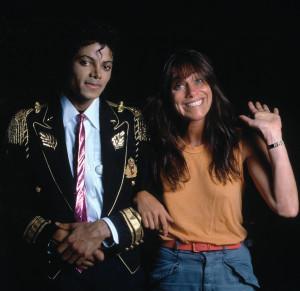 Iggy, Dylan, Springsteen, Sting, Michael Jackson, Patti Smith. You not only photographed them, you became close friends. They obviously accepted and trusted you.
Iggy, Dylan, Springsteen, Sting, Michael Jackson, Patti Smith. You not only photographed them, you became close friends. They obviously accepted and trusted you.
I don’t think it’s necessarily that they accepted me – but also, did I accept them? Friendship requires time and effort and you have to have things in common. For example, Sting, Stewart and Andy were unique in that they were educated and had many interests outside of music. Stewart made films. Sting was writing films and had been a great teacher. So we had a relationship based on other things. Sting and I would go to art galleries together. It was sort of like high school or college. We learned from each other. I think to look at someone like Sting or Dylan as being higher than yourself is a big mistake.
Was Michael Jackson hard to work with?
Not with me. Not at all.
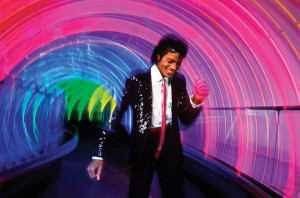 I love the story where you are alone with Michael at Disney after dark, shooting in the tunnel of light. He’s a little uptight until you start to pull your best James Brown moves. Then he laughs and starts to dance too.
I love the story where you are alone with Michael at Disney after dark, shooting in the tunnel of light. He’s a little uptight until you start to pull your best James Brown moves. Then he laughs and starts to dance too.
Out of all the people I’ve met in my life, Michael was like someone from another planet. Like an alien. You couldn’t try to describe him as a regular person. I mean, when you and I were five we were watching cartoons. Michael was watching himself in a cartoon when he was five.
Was he the strangest?
Yes.
Stranger than Dylan?
Oh yes. Much. Bob’s not that strange.
Dylan seems like such a regular, likeable guy in your book. I love the Bob Dylan you write about.
I think Bob is a regular, likeable guy. Obviously an incredibly smart guy. He wants to be inscrutable to the world and he’s done a fine job of that. But he has a great sense of humor. The best ones are generally the funniest.
Zappa. Stewart and Sting. Dylan. Zappa was the funniest though.
You’re shooting Levon Helm. Dylan wants to tag along and you tell him the only way is if he’s your lighting guy.
He carried my cameras too. I warned Bob to stay out of the shot. They hadn’t seen each other in years and I knew if I walked in with Bob, Levon would pay no attention to me. I had twenty minutes to do a cover for the Sun Times before he walked on stage. Bob promised he would stay out of the way and just measure the light. We get there and first thing he does is grab a guitar and jump in the picture. I’m screaming for him to get out. That’s why everyone is laughing.
Did you get your shot?
Yeah, finally. But Bob didn’t make it easy.
Tell me about praying with Bono.
Before U2 was signed to Island Records, Chris Blackwell would sometimes take me to see artists to get my opinion. He took me to see U2 and we went backstage and they were all praying. Like seriously praying.That was the first time I had seen artists pray before a show. Then U2 got on this tiny stage and played and they were… horrible. Bad musicianship. Bad sound. I didn’t think Bono could move well. He wasn’t that great of a singer. Chris asked me what I thought and I said, “Do NOT sign them. The only way they’ll make it is because God heard their prayer.”
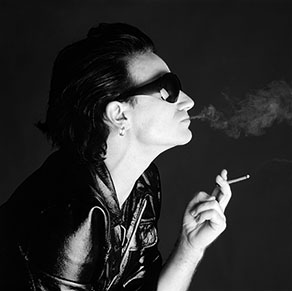 Ooh.
Ooh.
But Chris thought they had a spirit about them so he signed them. What I did love about U2 was how hard they worked. The great ones understand hard work and passion. It’s not just doing the show and being a rock star. It’s about the craft. I think U2 are great now.
Hard work and prayer.
Absolutely. But back to your question, Andy Cavaliere from Grand Funk and I we were the very best of friends. And Andy had just died. There was a knock on my door and it was Bono. He came straight to me, took my hand and we prayed.
You went to college with Iggy Pop.
Yeah….
You were there when he got his name!
I got my name too! (ed. – “Famous”)
And you and Iggy flirt for awhile before finally confessing that you’re both virgins and not nearly as hip as you pretend to be. That story is gold.
Really? Well, I did select the images because of the stories I wanted to tell. It’s more than just another picture of a rock star.
Name the five most beautiful faces you’ve photographed.
When you say beautiful, do you mean bone structure?
Maybe beautiful isn’t the right word. Charisma? That certain “something”?
Debbie Harry.
Why?
Not just physical beauty but because she loved the camera. Some people, like Bruce, you had to help be comfortable with the camera. Others are already there.
Okay, so most beautiful, photogenic, charismatic, certain “something”, absolute starpower quality.
Debbie Harry.
Agreed.
Yeah, that’s an easy one.
Do you want to talk about Springsteen?
Sure, I don’t care.
I’d never heard the story of how he flew into a rage during his set at the No Nukes show, waded through the audience, dragged you on stage by your arm and then pushed you off. That’s crazy.
Listen, I don’t do interviews about Bruce but he has a following, a lot of them journalists, who want to see him as a hero. And they have reinterpreted events and written books where they talk about that moment and I never read anything that captured the truth. That’s the reason I put the whole story of the Musicians United for Safe Energy concert –No Nukes — into my book.
You want to set the record straight.
Yes, I do. It was upsetting to me that I would take a certain amount of blame for what happened. We worked very hard and donated services to this event that we hoped would bring good things to the world. We were not paid — but the artists were. Not only expenses but a great deal of promotional value. People need to know there are many people who work hard behind the scenes and get no glory. And I was one of those people. I gave my time and talents and my employee’s time and talents. I went back and forth but decided I need to talk about what happened and why Bruce would do what he did.
It was shocking.
A lot of people were shocked. Nobody knew much about Bruce’s personal life.
You talk about how Bruce was such a person of discipline and control, so for him to drop his guard and screw up in public like that? What would cause someone to make a mistake of that magnitude?
Love! Love makes you crazy!
Is that it?
Of course! Look at you laughing! You know you’ve done some crazy stuff in the name of love.
Yes, I have.
Well, that was him. I’m a girl, he’s a guy. That’s why he did it. Not because I was shooting a show I wasn’t supposed to or that I didn’t belong there. That’s insulting to me. If I want pictures of Bruce Springsteen, do you really think I need to sneak into some concert? Don’t you think I have them at home? I lived with him! So no one was saying how I laid out twenty-five grand or the work I did to help the show and it was very offensive. But after thirty-five years…
It’s water under the bridge.
Yeah. Listen, it doesn’t mean that Bruce is a bad person. He was young, I was young. You lose it sometimes. He lost it and that’s okay.
That’s human.
Exactly. I just want to set the record straight after all this time. Bruce isn’t mad at me, I’m not mad at him.
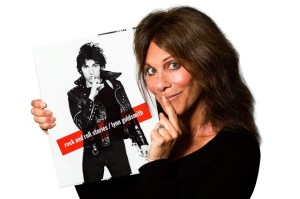 Must not be. You put him on the cover of your book.
Must not be. You put him on the cover of your book.
It’s a great photograph and I thought it fit the title, Rock & Roll Stories. See? He’s doing the shush. He looks rock & roll. He’s wearing the leather jacket. Which is my jacket. Can you pick a photograph from the book that makes a better cover? No! That’s it.
What makes a classic photograph?
Something in the image that has an impact, that draws you back or makes you need to see it again. Also, the subject really needs to collaborate with the person on the other side of the camera.
Can I show you my favorite shot from the book?
Please.
I made it through grad school psych writing papers on rock & roll, dissecting the dynamics and talking about personalities. There’s a picture of Van Halen posing on a limousine. Eddie and Alex are up front, looking a little smug, obviously in charge. Mike Anthony is smack in the middle, torn, trying to keep the peace. Sitting forlorn on the trunk is poor old Diamond Dave, looking a little vaudeville, kind of lonely, but mugging for the camera still. This one picture tells the Van Halen story better than any bio I’ve read.
Wow, really?
Yeah, it shows you all that dysfunctional chemistry, the tension. But that’s what made Van Halen work.
You’re right. It did.
Did you know that at the time?
Not at all.
Did you stage this shot?
I did stage it. But I’m very intuitive and that plays a part. I guess conventional thinking would have been to put Eddie and David up front. But I put Eddie and Alex. David on the trunk. And I did put Michael in the middle.
But then there’s the photo of Dave and Eddie holding hands and smoking cigarettes, roller skating down the hotel hall. As a Van Halen fan, I really love that one.
Yeah, me too. I wanted to show people that they didn’t fight all the time. Eddie and Dave were young, they were good friends. They loved each other. Part of my job was to help them remember what it was like to enjoy each other.
So a great photograph tells you a story.
Yes. You got it.

